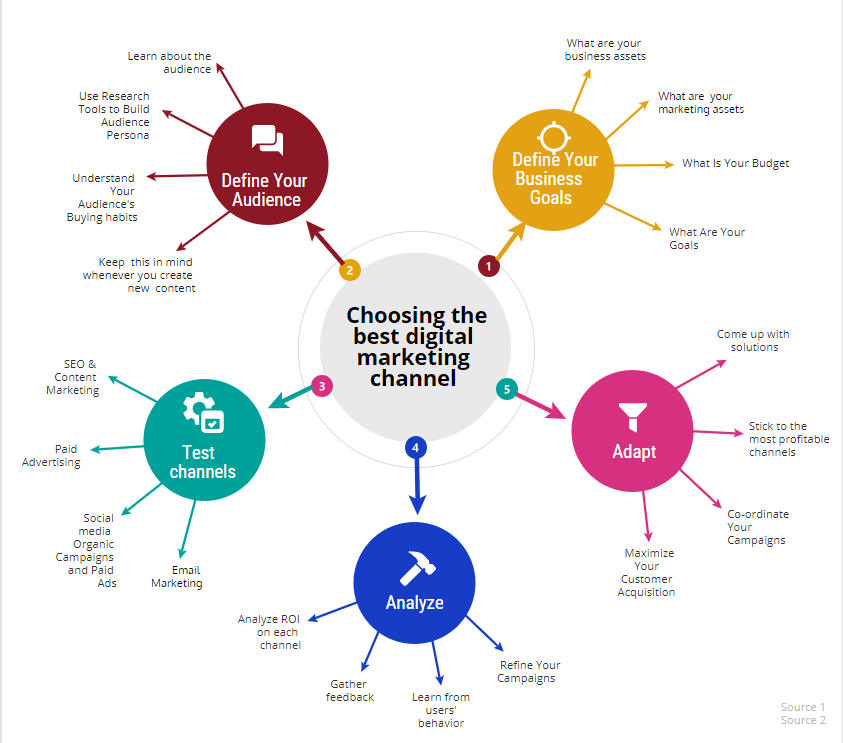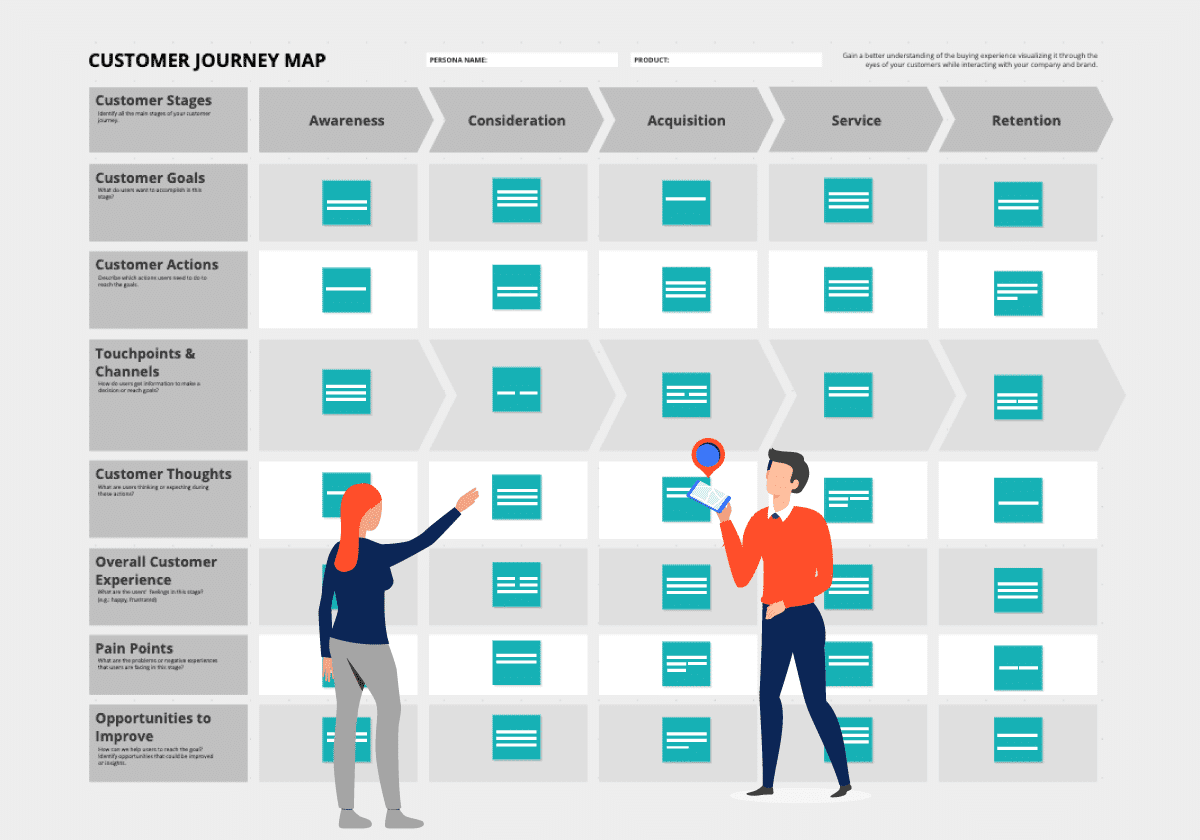
Is your content marketing up to your business goals?
2 views
.
8 years ago
In the current-day social media age, every business is a publisher, and all they need is a continuous flow of great content. It comes easily to say than doing! If you are always striving for creating the content that will have a lasting impact on your audience over social media and distinguish you from the crowd, […]
In the current-day social media age, every business is a publisher, and all they need is a continuous flow of great content. It comes easily to say than doing! If you are always striving for creating the content that will have a lasting impact on your audience over social media and distinguish you from the crowd, that’s great! You’re heading towards the right direction. But prior all this, you should realise the significance of building your content marketing strategy.

A well-designed content marketing strategy often serves as a guiding light for all the future events such as planning, creation, promotion and evaluation of the content. It might look like more work beforehand to take out time for creating a solid strategy, but your workload will be reduced in the long-term scenario, and the quality of your content will also enhance with the time.
If you are thinking about the best time to think about your objectives and develop a fail-proof content marketing strategy that can lift your social media efforts to a level higher, don’t waste more time thinking – it is now. Yes, now is the best time to get started! This write-up will serve as a helpful walkthrough for guiding you through every step of the process.
Strategise the content marketing goals and align them with business goals
Your goals should be SMART. Don’t get confused with the general reference to this word. SMART here implies towards a strategy which is Specific, Measurable, Attainable, Relevant and Time-based. You should be committed to creating the content that can contribute to your marketing efforts.
Whenever you plan a piece of content, what criteria you follow for estimating the worth of creating that and whether it should be propagated? Well, the best way is to have clarity about accomplishments you want to make with that piece. Listing out some common objectives that you can meet with content marketing:
• Create brand awareness in key verticals
• Redirect referral traffic to your website
• Increase the number of signups
• Compel visitors to get on a lead-generation focused landing page
Observe how any of the mentioned content marketing goals are not getting counted in likes, favourites or retweets – commonly referred to as vanity metrics. The measurement of social media goals will help to align back towards the business goals driven by content marketing goals. And this alignment force will make you consider the business metrics such as traffic, leads and conversions, allowing you to focus on the job of other teams as well. This way, you will realise the value of content marketing in a broader sense.
Another thing that you need to consider while setting up your content marketing goals is – How will you measure the goal? Make sure you have specific measuring metrics in your mind that can help you determine the progress you have made. If you are unable to measure your goal, you should probably reconsider the entire cycle of marketing. Having specific goals will help you figure out the most effective ways to achieve them. It will also inspire the team of content creators to come up with the brimming ideas to shine in the long-term.
Identify the audience you are going to target through your content
A significant share of the success of any content marketing strategy depends on the factor – whether you know your audience and their expectations? Based on goals that you have set, you will be required to put together the profile of audience or the personas of specific buyers for getting guidance about the ideation and creation of the content to move forward.
Make every effort to accumulate maximum detail about the audience you are going to target. You can make use of social listening tools for honing their interests and characteristics more effectively. This will also ensure the resonating power of your content. Make sure you have answers to the three most important questions listed down:
• What type of content they generally share, including the format, source, tone and length?
• Where your target audience spends most of their time (the online platforms, i.e. blogs, social networking or forums)?
• What is the best way to reach your target audience (through advertising, organic searches, social media, etc.)?
To put simple- if you are focussing on lead generation and sales through your content marketing strategy, you should create content keeping the buyer’s perspective in mind. Similarly, if you are preparing a tutorial, the tone, length and format of the content may vary from the content pitching for the sales. Remember, your audience can be anyone – a student, a business owner or any other professional- so you should try reaching them through the words with which they can relate more easily. It’s a simple rule – Create Content Focussing Readers.
Determine the sort of content most suitable for your business
Now that you have set up your goals and identified the target audience, you should be able to create the content that can help you attain both. There are several examples to understand this aspect with much more clarity. Let’s have a look at a few of them:
1) If you want to create and increase the brand awareness in the key verticals, you need to create content that can make a broader appeal like Videos tutorials, case studies or success stories, practitioner blog content and culture-hiking social media content etc.
2) If you want to redirect referral traffic to your website, you should create content that can make it easy for people to identify your industry or business such as Email newsletters, Guest posts, targeted ads of social media and SEO optimised blogs.
3) If your objective is to increase the number of signups, your content should highlight the advantages a visitor can reap with your products and offerings along with a clear call to action that can convince people to sign up. For making a mass appeal, you should approach with content pieces like product demos, social media campaigns and advertisements, video tutorials etc
4) If you want to compel visitors to get on a lead-generation focused landing page, you need to raise your voice with a content that is comprehensive and helpful to help people with decision making. You can also offer referral incentives for more attention. The content types useful here will be – white papers, toolkits, guides, contests, live product demo and webinars.
Work on the execution plan of the content
As you know what type of content you need to create, the next step is towards the process for creating the same. You should have a step-by-step map focusing on How to convert ideas into a finished product. With a proper content execution plan, you can add stability to the entire marketing strategy and ensure that keep track of every content piece.
An ideal content execution plan includes – a schedule, a great idea, a brief of the project and a content chain of command.
• A schedule helps you towards an organised way of handling goals achievement as you will know when to do what. You can prepare what piece of content should be released on which day of the week. To sum up, you should decide on the frequency of releasing relevant content pieces. This consistency will help to build trust among visitors, and they will know when they can expect the next update about your offerings.
• A great idea can open up doors to success. So, there should be a specific team responsible for coming up with great content ideas, but this doesn’t mean that you restrict other people from giving any opinion. You should be open to ideas coming from different people regardless of their designation as you know never know from where you can get a winning idea.
• The brief of the project or the idea also contributes mainly when more than one person is involved. A brief highlights the central idea, the goals that can be accomplished through it, target audience, deadlines and the specific role that each person involved in the project will have. A nicely framed brief helps to avoid too many questions, and disagreements between the content creators and project leads. Make sure you are working on a brief template before passing it on to the team.
• The final creation also involved numerous things to consider starting from the basic writing process for which you will need writers. Once the copy is written, you can send it over to the copy editors to make sure it is error-free. Further, you can pass it on the designing team or the videographers.
Created content should be promoted well.
Once your content creation task is finished, the task of promotion comes into play. As not every content piece is equal, you should be prepared well-in-advance about how to promote your content for a wider reach and a significant influence. The content promotion methods ensure that all the efforts that you have made for creating exceptional content don’t go vain.
With the content promotion process, your team will be able to decide – how to promote a particular piece of content? This includes considering the right source to promote it, the duration, number of times it can be used and the budget required for the same. There are several modes of content promotion, including Owned social media, Earned social media, Paid social media, Email marketing, Search/display ads, Influencer marketing, SEO optimisation etc.
Experimenting with different methods will help you determine the best one for your content and target audience. And when it comes to content, nothing works best than testing.
Measuring and refining the content marketing strategy should be continuous.
From ideation to promotion, you have included everything in your content marketing. What left? Well, the evaluation is still left. You should be able to measure the success of your content marketing strategy through a measurement process right in place.
You can use numerous measuring tools available to figure out the flaws and fix them within a minimal period and refining your strategy accordingly.
























